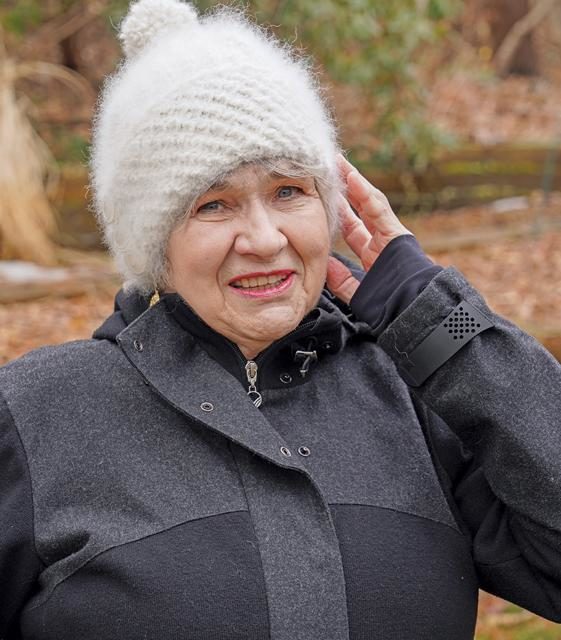I spied it on a basement cleaning excursion last year: that big bag of hair I’d brushed out of my beloved dog Angel over two decades ago. Did I think it would disappear on its own? Angel was a Samoyed, fluffy and white, with a plume of a tail that curled over her back, black eyes, a pink tongue, and an incorrigibly happy and stubborn personality.
She weighed about seventy pounds most of her adult life, and it seemed most of her bulk went into producing fur, both a stiffer outer coat and a downy inner coat akin to angora. As I brushed, I saved her hair. I washed and dried it, intending to do something useful with it, as I had heard that Samoyed fur could be spun and knitted. I moved the bag of hair with me to Ann Arbor in 2012 and stashed it in the basement.
—
It was very tangled, and I knew the first step was combing it out so that all the strands would go in the same direction. I began with carding brushes like ones used by long-ago farm wives to untangle sheep’s wool before spinning it. A very slow and laborious process.
“This will take forever,” I thought. “There must be a faster way.” Online, I found a manual carding machine that would speed the process. Cost: about $1,000! Ouch. Too much for a one-time project. So, I posted on Nextdoor.com that I’d like to rent or borrow a carding machine. A reader replied, “The Ann Arbor District Library has one that any cardholder can borrow, free of charge!” I called the library, and their sole machine was available for two weeks at a time. I picked it up, and the kind person at the library helped me load it into my car. It was heavy.
I started immediately to card Angel’s fur, cranking out small “rolags.” From those, I’d learned, the fur could be spun by hand or on a wheel. I didn’t how how to spin, either, and had little interest in learning. All I wanted was an article or two of clothing to remind me of my beloved dog.
I set a goal of three-to-four completed rolags a day, but quickly realized I’d have to increase production to five-to-six rolags a day and extend the loan time by one week. The AADL said yes, and in three weeks, with help from a few friends, I finished the carding and had a large box of downy-soft rolags.
—
Now, I needed a spinning wheel and/or a spinner. Once again, I advertised on Nextdoor. A neighbor a few blocks away had a spinning wheel he’d bought for his wife twenty or twenty-five years ago. She’d never used it, so it was very dirty from its years in the basement, and the wood was dry. But it was mine, if I wanted it.
I brought it home and enlisted two local kids to help me wash it, dry it, and coat it with layers of Murphy’s Oil Soap. It looked almost new when they finished. Now, to turn the rolags into yarn.
Back to Nextdoor. I posted a request for someone to spin Samoyed fur and got several replies. I chose the first one, from a young woman named Jordan (with a PhD, two young kids, and a full-time research job) who was interested in working with unusual fiber. She came over, loved the fur and the challenge, and saw the now-sparkling spinning wheel. We made a deal: She’d spin the rolags in exchange for homemade baked goods and the refurbished wheel.
When she brought over her first attempts, the yarn was beautiful, luxuriously soft but a bit lumpy. The next attempts were even better; no lumps. And we had at least three skeins to work with, including one she made into two-ply yarn with black merino wool.
Now, I needed a knitter. Alison, also courtesy of Nextdoor, was anxious to work with dog fur. She brought designs to my house, and we chose a pattern we both loved. Within six days, I had a snuggly hat to take on a winter trip! Cost: minimal, plus promises of more home-baked goods. A scarf and another hat are to come.
Let’s see. That’s one dog, and at least nine people, involved in my project! It takes a special town–Ann Arbor–to make a very special hat.
